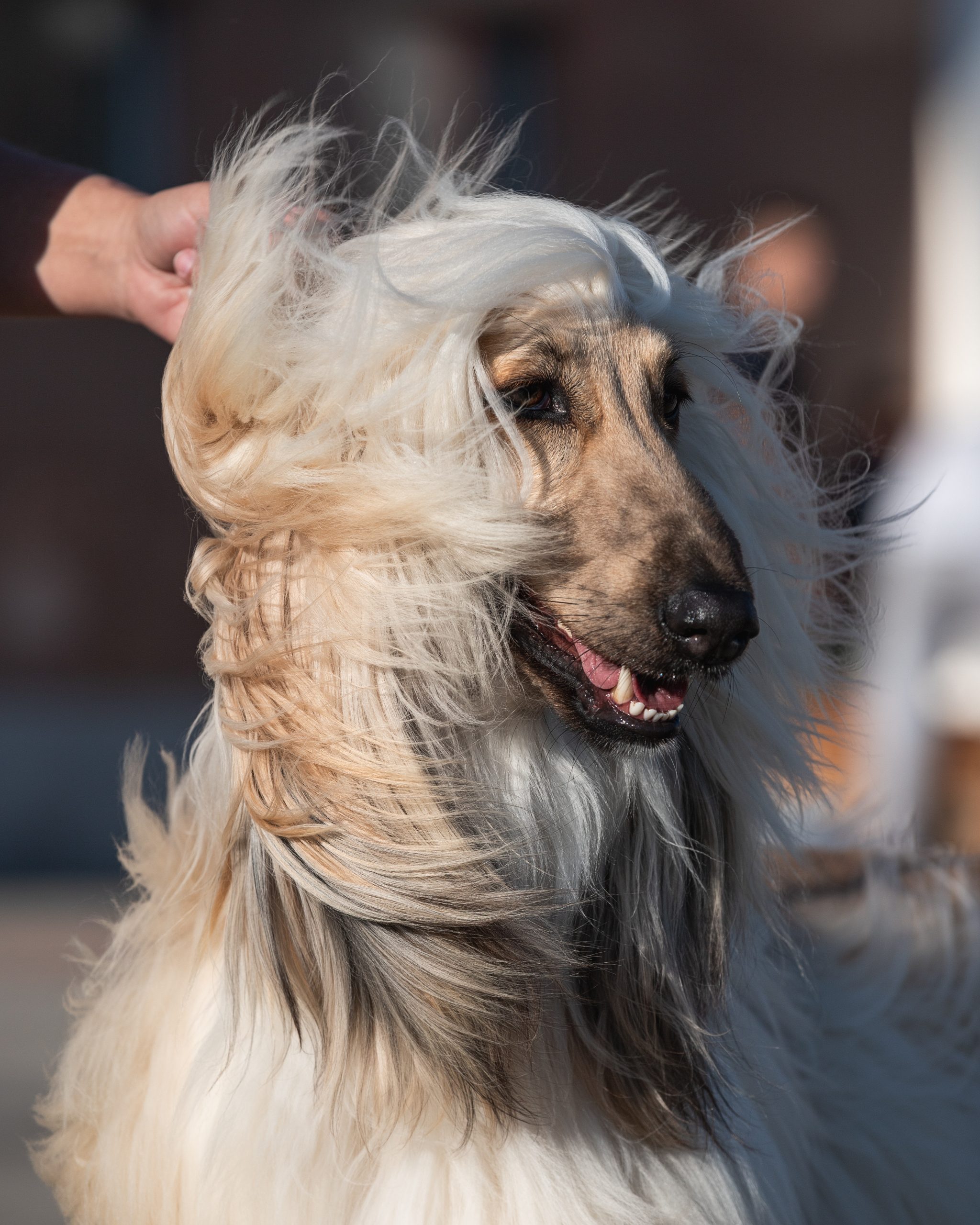This is an ancient breed. In fact, some authorities believe that the Afghan Hound is the oldest purebred dog breed. (According to an ancient myth, a pair of Afghan Hounds represented the canine species on Noah’s Ark.) Because the breed predates written history by a few thousand years, and because it evolved in some of the world’s most remote locations, its exact time and place of origin within the vast area that is now Afghanistan, India, and Pakistan will never be known. What we do know is that for generations, Afghans were rugged, fleet-footed hunting companions and status symbols for Asia’s mountain kingdoms’ royals, tribal chieftains, and aristocracy. Afghan Hounds are part of the sighthound subclass of hound breeds, which rely on their panoramic vision and explosive speed to identify and pursue their prey.
The Afghan hound, a fixture of Eastern culture since the dawn of civilization, did not appear on the stage of Western history until the late 1800s. The breed was brought to Europe by English servicemen returning from the British Empire’s greatest reaches at the time. By the early 1900s, the Afghan had become a favorite of the British gentry.
The AKC registered the first of the breed in 1927, but it wasn’t until the early 1930s that the breed really took off with American breeders and owners. A breeding pair purchased from England by Zeppo Marx, the youngest of the zany Marx Brothers, was among the most important dogs in America during those early years. Since then, the Afghan’s reputation in America has been built on his exceptional skills as a pet and his commanding presence in the ring. Pablo Picasso’s massive artwork at Chicago’s Daley Plaza represents Kabul, the artist’s much-loved Afghan Hound.




 Health
Health Grooming
Grooming Exercise
Exercise Training
Training Nutrition
Nutrition